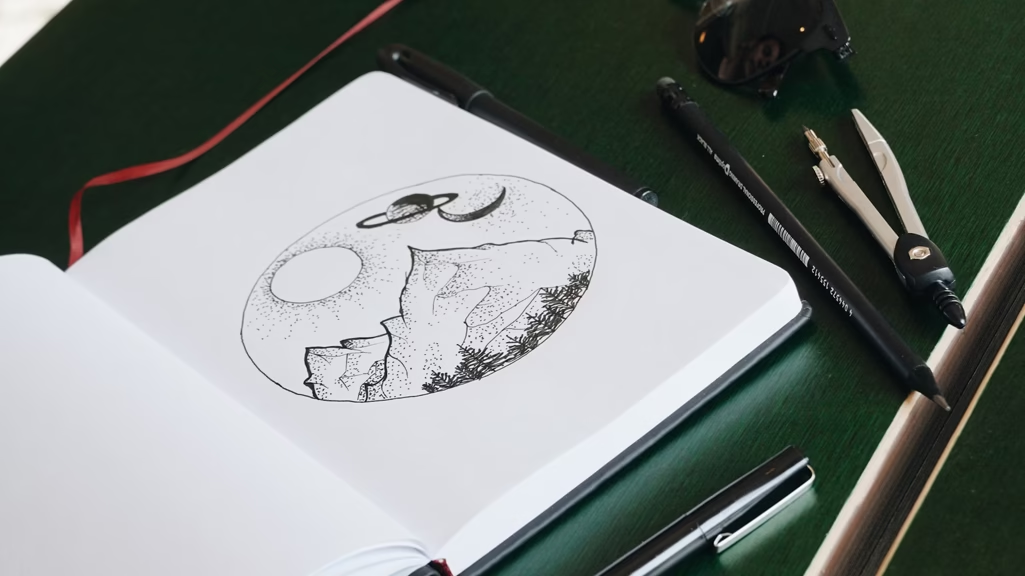
How Drawing Helps You Think: Benefits of Drawing
In recent years, the idea of drawing as more than just a creative outlet has gained significant attention in cognitive science and psychology. People are increasingly discovering how drawing helps you think more clearly, enhances problem-solving skills, and even fosters emotional well-being. Grave the benefits of drawing. From enhancing memory and focus to improving communication, the act of drawing offers a wide array of cognitive benefits. This article will explore how drawing helps you think in various contexts, from improving mental clarity to boosting creativity and intellectual capacity. How Drawing Helps You Think: A Cognitive Perspective The process of drawing engages several areas of the brain, particularly those linked to creativity, visual processing, and even emotions. When you draw, you are not simply marking paper with shapes and lines; you are actively engaging your mind in a dynamic and creative activity that requires focus, concentration, and interpretation. As you engage in this process, your brain begins to establish connections between seemingly unrelated concepts. Enhancing both lateral thinking and problem-solving abilities. This is why many people find that when they draw or doodle during meetings. Or brainstorming sessions, they often come up with more innovative and creative ideas. 1. Drawing Enhances Memory and Learning One of the most direct ways that drawing helps you think is through its impact on memory retention and learning. This has been widely studied in cognitive psychology, with evidence showing that visual representations improve comprehension and recall. The act of drawing integrates both verbal and visual components in the brain, making it easier to retain and recall information. In educational settings, students often benefit from drawing diagrams or illustrations to accompany text-based learning. This visual strategy taps into the brain’s natural ability to process visual stimuli, which can significantly enhance understanding and retention. 2. Drawing Improves Problem-Solving Skills Another crucial benefit of drawing is its positive impact on problem-solving. Whether it’s sketching a design or visualizing a solution to a complex problem. Drawing helps you break down a task into manageable parts and provides clarity for resolving issues. Research has shown that creative exercises such as drawing can significantly enhance lateral thinking, which is the ability to approach problems from different perspectives. This form of problem-solving is invaluable not only in the arts but in various professions, from engineering to business. 3. Drawing Stimulates the Brain’s Visual Processing Areas The human brain is designed to process visual information more quickly than textual or verbal data. By drawing, you engage the brain’s occipital lobe, which is responsible for processing visual stimuli. This interaction boosts cognitive function and increases mental clarity. 4. Drawing as a Tool for Emotional Expression and Clarity In addition to its cognitive benefits, drawing can also be an essential tool for emotional clarity and self-expression. When you’re feeling overwhelmed or stressed, drawing can serve as a cathartic release, allowing your brain to process emotions in a non-verbal form. For many people, art therapy, including drawing, has been used as a way to cope with trauma, grief, or anxiety. By translating emotional turmoil into visual forms, individuals gain insight and emotional release, which can lead to improved cognitive functioning overall. 5. Drawing Enhances Communication and Idea Sharing Drawing can be an invaluable tool for conveying ideas, especially when verbal communication may fall short. 6. Drawing Boosts Creativity | How Drawing Helps You Think One of the most commonly cited reasons for how drawing helps you think is its powerful impact on creativity. Whether you’re an artist or not, engaging in drawing exercises allows you to think outside the box, explore new ideas, and come up with original solutions. 7. Drawing Strengthens the Connection Between Mind and Body Drawing is a holistic activity that connects the mind with the body, fostering better coordination and enhancing cognitive processes. The process of creating art requires physical engagement through hand movements, which enhances motor skills, spatial reasoning, and sensory integration. Conclusion: How Drawing Helps You Think More Clearly and Creatively As we’ve seen, drawing is not just an art form; it is a powerful cognitive tool that enhances problem-solving, boosts memory retention, improves focus, and stimulates creativity. Whether you’re a student, a professional, or simply someone looking to sharpen your mind, integrating drawing into your daily life can be a valuable way to engage your brain and improve your thinking. From the way drawing helps you think by fostering creativity and critical thinking, to its emotional and therapeutic benefits, the positive impact of drawing on the brain cannot be overstated. By incorporating more drawing into your life, you can unlock new cognitive pathways, refine your communication skills, and improve your problem-solving abilities. It’s clear that the simple act of putting pen to paper can have a profound effect on your mental clarity and overall cognitive function. So, the next time you’re faced with a challenging task or need to clarify your thoughts, remember how drawing helps you think—and give it a try!


